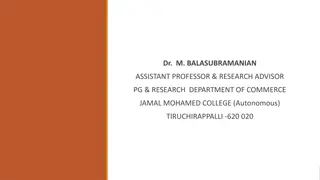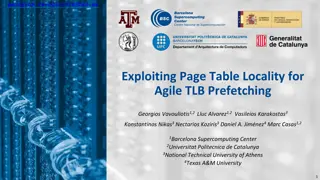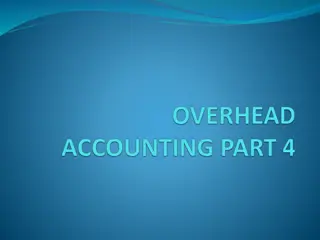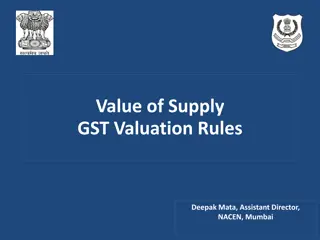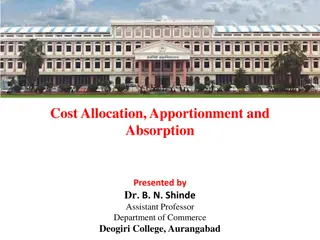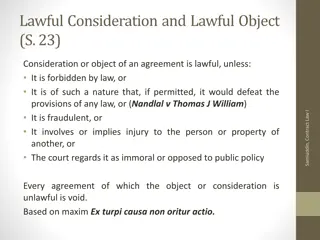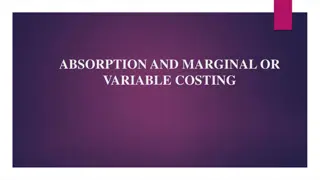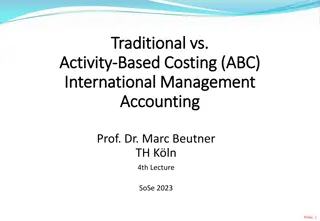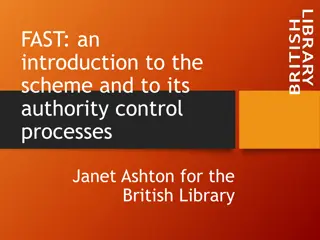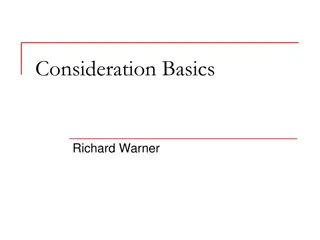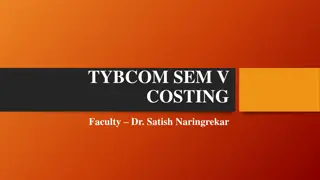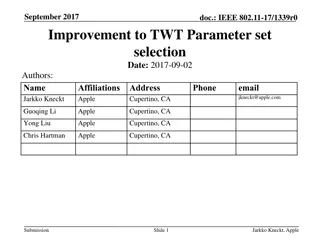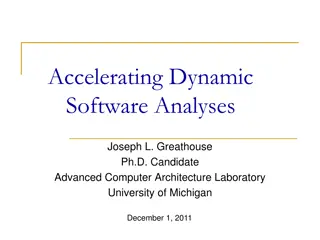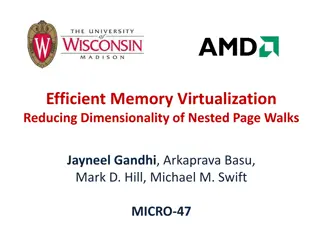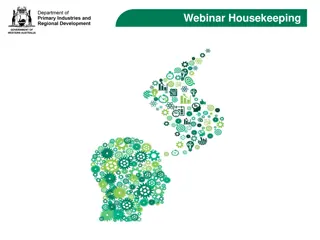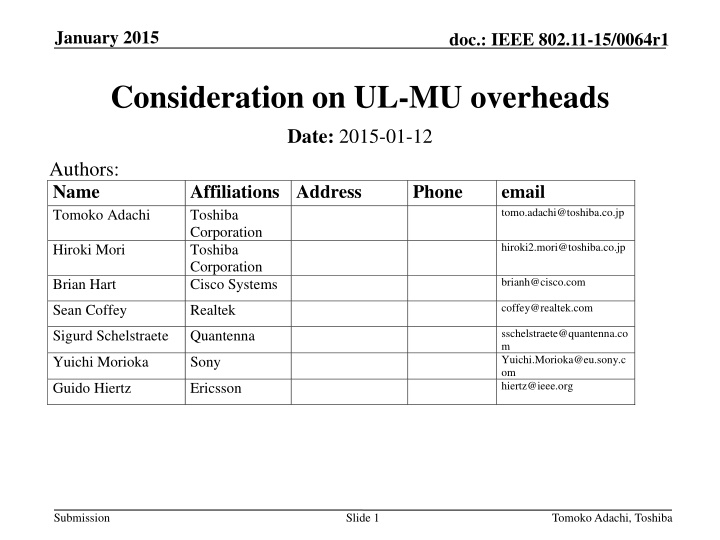
UL-MU Overheads in IEEE 802.11-15/0064r1 Document
Delve into the challenges and considerations surrounding UL-MU overheads discussed in the January 2015 IEEE document authored by Tomoko Adachi from Toshiba. The document explores the complexities of UL-MU synchronization, transmission phases, and comparison of methods for achieving efficient data transmission in a wireless network context.
Download Presentation

Please find below an Image/Link to download the presentation.
The content on the website is provided AS IS for your information and personal use only. It may not be sold, licensed, or shared on other websites without obtaining consent from the author. If you encounter any issues during the download, it is possible that the publisher has removed the file from their server.
You are allowed to download the files provided on this website for personal or commercial use, subject to the condition that they are used lawfully. All files are the property of their respective owners.
The content on the website is provided AS IS for your information and personal use only. It may not be sold, licensed, or shared on other websites without obtaining consent from the author.
E N D
Presentation Transcript
January 2015 doc.: IEEE 802.11-15/0064r1 Consideration on UL-MU overheads Date: 2015-01-12 Authors: Name Tomoko Adachi Affiliations Address Toshiba Corporation Toshiba Corporation Cisco Systems Phone email tomo.adachi@toshiba.co.jp hiroki2.mori@toshiba.co.jp Hiroki Mori brianh@cisco.com Brian Hart coffey@realtek.com Sean Coffey Realtek sschelstraete@quantenna.co m Yuichi.Morioka@eu.sony.c om hiertz@ieee.org Sigurd Schelstraete Quantenna Yuichi Morioka Sony Guido Hiertz Ericsson Submission Slide 1 Tomoko Adachi, Toshiba
January 2015 doc.: IEEE 802.11-15/0064r1 Abstract This presentation considers impact of UL-MU overheads. Submission Slide 2 Tomoko Adachi, Toshiba
January 2015 doc.: IEEE 802.11-15/0064r1 UL-MU UL-MU is more difficult than DL-MU because STAs have to synchronize their transmissions. The easiest way to achieve synchronization is by an AP s support. But the AP doesn t really know which STA has data to transmit. To find out STAs transmission demands, asking one by one is the steadiest way, but that will be a large overhead. On the other hand, if we can do UL MU transmission for data, then response frames can also be in MU transmission. Submission Slide 3 Tomoko Adachi, Toshiba
January 2015 doc.: IEEE 802.11-15/0064r1 UL-MU Assume to divide into 3 phases for UL-MU transmission. UL data transmission phase DL response phase Initial phase Submission Slide 4 Tomoko Adachi, Toshiba
January 2015 doc.: IEEE 802.11-15/0064r1 Initial phase Both exchanges in legacy rate (24 Mbps) Assume two approaches ref. doc.11-14/0598 AP asks STAs one by one if they have Tx demands method 1 method 2 AP Poll Poll CTS Inquiry Inquiry Inquiry RTS QoS CF-Poll STA 1 TxReq Resp. CTS RTS to N_m STAs STA 2 Resp. STA N_m Resp. N_m: number of STAs multiplexed (4) Note: above conventional frames were used as substitutes for throughput calculation (may be too convenient) Submission Slide 5 Tomoko Adachi, Toshiba
January 2015 doc.: IEEE 802.11-15/0064r1 DL response phase Assume two approaches BA to all N_m STAs by DL-MU All exchange in legacy rate (24 Mbps) method A method B AP BA BA BA BA STA 1 BAR STA 2 BAR STA N_m BAR N_m: number of STAs multiplexed (4) Submission Slide 6 Tomoko Adachi, Toshiba
January 2015 doc.: IEEE 802.11-15/0064r1 Comparison cases UL data transmission phase DL response phase Initial phase Throughput comparison on DL response phase methods (method 1-A and 1-B) method 1 method A method 2 method B Throughput comparison on initial phase methods (method 1-B and method 2-B) Submission Slide 7 Tomoko Adachi, Toshiba
January 2015 doc.: IEEE 802.11-15/0064r1 Throughput calculation N_m: number of STAs multiplexed (and also inquired for method 1) (4) assumed OFDMA using short GI for MU transmission TXOP limit = 0 20 MHz bandwidth, 1SS, MCS 8 assumed 24 us for HE preamble part (+4 us to VHT preamble) full buffer, error free Submission Slide 8 Tomoko Adachi, Toshiba
January 2015 doc.: IEEE 802.11-15/0064r1 Throughput comparison on DL response phase methods Initial phase: method 1 DL response phase: method A vs. method B Submission Slide 9 Tomoko Adachi, Toshiba
January 2015 doc.: IEEE 802.11-15/0064r1 Throughput comparison on initial phase methods Initial phase: method 1 vs. method 2 DL response phase: method B Submission Slide 10 Tomoko Adachi, Toshiba
January 2015 doc.: IEEE 802.11-15/0064r1 From the results DL BA responses after UL-MU transmission should be multiplexed (in some way, such as transmit in DL MU or extend BA frame format to carry multiple STAs responses). Initial phase prior to UL-MU transmission should be simple. Need to find a more rough way to grasp or estimate TX demands. Submission Slide 11 Tomoko Adachi, Toshiba
January 2015 doc.: IEEE 802.11-15/0064r1 Straw Poll Do you agree to include in the specification framework a mechanism by which DL BA/ACKs, in responses to UL MU transmission, are multiplexed eg. DL MU-MIMO, DL-OFDMA, single PSDU Yes: 60 No: 1 Abstain: 51 Submission Slide 12 Tomoko Adachi, Toshiba

